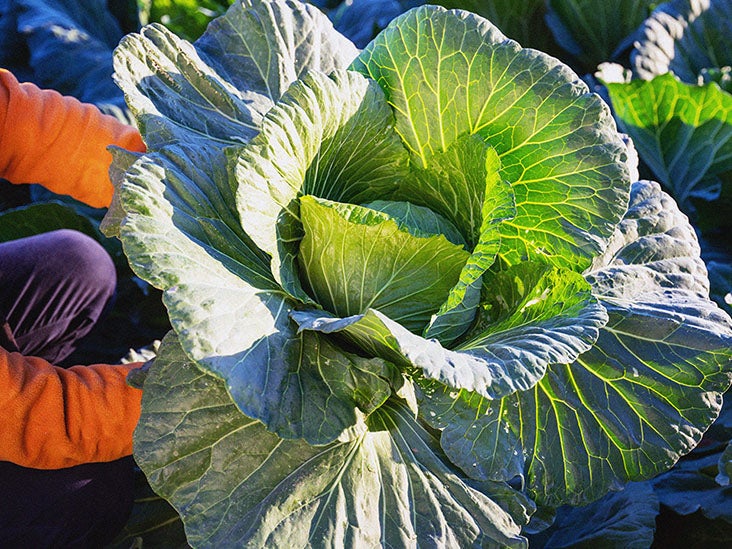
- Antimicrobial resistance is a growing problem, with many bacteria now resistant to multiple antibiotics.
- When bacteria infect wounds, they form biofilms which delay the healing process.
- A new study has identified a compound in green, leafy vegetables such as broccoli and cabbage which inhibits the growth of these biofilms.
- Researchers found that the compound, 3, 3,-diindolylmethane (DIM) accelerated wound healing, and helped restore the potency of antibiotics in fighting infection.
Green, leafy vegetables are good for you. They are rich in nutrients and fiber and low in calories and fat. Studies have suggested that they may protect heart health and reduce the risk of some cancers, and may even slow age-related
Now, a study from Ben-Gurion University of the Negev has shown that these
It is published in the journal Pharmaceutics.
Antimicrobials are medicines used to treat infections caused by bacteria, viruses, parasites and fungi. However, because of the overuse of antimicrobials, particularly antibiotics, many
In 2021, the World Health Organization
As more pathogens become resistant to multiple antimicrobials, these medicines become ineffective, meaning that infections are increasingly hard to treat.
So, the hunt is on for alternative treatments to combat disease-causing microbes.
The new study investigated a compound, 3, 3,-diindolylmethane (DIM), a derivative of indole-3-carbinol. Indole-3-carbinol is formed from
As well as getting DIM from leafy greens, people can also take DIM as a supplement. Popular uses of leafy greens, a source of DIM, include estrogen control, muscle building and fat loss.
In general, the potential benefits of DIM supplements have not yet been supported by peer-reviewed research.
In this study, researchers investigated the effects of DIM on
“The ability to safely disrupt a bacterial biofilm has the potential to reduce antibiotic resistance. Treating an infection that has formed a biofilm, and the source of the biofilm […] may require a longer course of an antibiotic(s). The longer a bacteria is exposed to the antibiotic, the greater the risk of the bacteria becoming heteroresistant or even resistant.”
— Dr. Sarah Satola, associate professor of medicine and infectious Diseases, director at Emory University School of Medicine’s Investigational Clinical Microbiology Core
The researchers investigated four
In all four bacteria, DIM reduced the biofilm formation by up to 80{7b6cc35713332e03d34197859d8d439e4802eb556451407ffda280a51e3c41ac}.
Dr. Satola told Medical News Today she would like to see more investigations:
“Biofilm formation was markedly inhibited by DIM in two of the pathogenic bacteria studied. Both were gram-negative bacteria. [It] would be nice to see if these data are similar in other important and gram-positive bacteria such as Staphylococcus aureus.”
Following their initial findings, the researchers then focused on A. baumannii and P. aeruginosa, both of which are multi-drug resistant and therefore clinically important. In this experiment, 50µM DIM inhibited biofilm growth by 65{7b6cc35713332e03d34197859d8d439e4802eb556451407ffda280a51e3c41ac} and 70{7b6cc35713332e03d34197859d8d439e4802eb556451407ffda280a51e3c41ac}, respectively.
When DIM was combined with the antibiotic tobramycin, the biofilm growth of P. aeruginosa was inhibited by 98{7b6cc35713332e03d34197859d8d439e4802eb556451407ffda280a51e3c41ac}.
“They report a plant-derived compound that inhibits biofilm formation. Since biofilm formation helps bacteria resist drugs and to attach to tissues the compound (or a derivative) could be clinically useful.”
— Dr. Arturo Casadevall, Bloomberg distinguished professor and chair of Molecular Microbiology and Immunology at the Johns Hopkins Bloomberg School of Public Health.
One study suggested that chronic wounds may
Working with pigs, the researchers infected full-thickness puncture wounds with P. aeruginosa. Once biofilms had developed, they applied creams formulated with DIM and/or the antibiotic gentamycin. They applied the creams
Wounds treated with DIM and with the combined treatment of DIM with antibiotics exhibited significantly decreased wound sizes. DIM alone enhanced and accelerated the wound-healing process.
The antibiotic alone did not inhibit biofilm formation. The researchers suggest this is due to the bacteria being resistant. However, combining the antibiotic with DIM appeared to restore its potency against P. aeruginosa.
According to the researchers: “We showed that DIM can be employed in combinational therapy with antibiotics to enhance the potential of the latter to treat drug-resistant bacteria. This indicates a potentially promising strategy for the eradication of biofilm complexes in medical settings.”
Dr. Casadevall told MNT: “The study provides evidence of both in vitro efficacy in interfering with biofilm formation and in vivo efficacy in an animal wound model. The results are very interesting and the approach is promising, with the caveat that a lot of development is needed before clinical trials.”
“The work is exciting because could point us to a new therapeutic approach to the problem of drug resistance, with the understanding that it is early in the development process,” he added.

